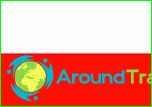Flags of Europe
Historically, many countries of the world had to defend the right of their country to be independent and indivisible, to have their own state symbols, which would be unique and inimitable. Every country in Europe has its own flag. In general, all flags of Europe can be divided into international and national.
There are six types of flags in the international flag category:
1. Flag of the Benelux. This includes the flags of the states of Belgium, Luxembourg and the Netherlands..
2. Flag of the Council of Europe / Flag of the European Union (since 1986), which is a blue canvas with a circle of stars. There are 12 stars on the flag, they are five-pointed and bright yellow.
3. Flag of the Commonwealth of Nations. It was approved in 1976 and looks like a blue canvas, in the center of which is a golden symbol of the commonwealth, a large letter «WITH». And the letter itself contains the globe.
4. Flag of the North Atlantic Treaty Organization, aka NATO Flag. This is a rectangular blue canvas. The central part of the flag is occupied by an unusual star, consisting of four rays. This star is placed in a white circle, and from the circle from the ends of the rays white lines diverge in four directions. This international flag appeared in 1953.
5. Flag of the Commonwealth of Independent States (CIS). The flag was approved in 1991 and is a dark blue rectangular cloth with the logo of the organization. At first glance, it seems that these are two human palms that hold a small model of the world..
6. Flag of the Central European Free Trade Association. Approved in the 90s and became a symbol of a free trade zone between different European states.
The state flags of Europe include the flags of the following states: Austria, Azerbaijan, Albania, Andorra, Armenia, Belarus, Belgium, Bulgaria, Bosnia and Herzegovina, Vatican City, Great Britain, Hungary, Germany, Greece, Georgia, Denmark, Ireland, Iceland, Spain, Italy , Kazakhstan, Republic of Cyprus, Latvia, Lithuania, Liechtenstein, Luxembourg, Macedonia and Estonia.
Each of these flags has its own history and meaning. Each of them looks different and is the state symbol of each individual country. The color scheme is absolutely diverse, it cannot be said that any standards are used in the design of the flags. Various legends are associated with them. But they all have one thing in common - they personify independent states..
Related articles:
-
Poland flag
Each individual country has its own state symbols. And the flag ranks in a row...
-
Flag of greece
Among the European states, the flag of Greece is the most easily recognizable and memorable....
-
Switzerland flag
The Swiss flag deserves special attention. Its shape differs from the flags of other sovereigns....
-
Norway flag
The flag of Norway is a rectangular red cloth with the image on ...
What to read
- Articles about Europe
- Museum mysteries
- Rivers of Europe
- Independently to Europe
- Railways of Europe
- Western Europe
- Europe Outlets
- European resorts
- Europe trains
- Trip to Europe
- Features of Europe






